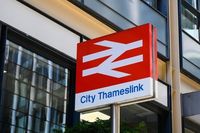For millions of British rail passengers, the dreaded announcement of a cancelled train has become an all-too-familiar soundtrack to daily life. Over the past year, data released by the Office of Rail and Road (ORR) and analyzed by multiple news outlets, including the BBC and Time Out London, paints a troubling picture: between August 2024 and August 2025, a staggering three million train stops were cancelled across Britain out of a total of 89 million scheduled. That’s a rate of about 3.3%—and for some regions and stations, the situation is even more dire.
The North East of England emerged as the country’s worst-hit region, with a cancellation rate of 4.5%, well above the English average of 3.5%. According to NewcastleWorld, stations like Hartlepool, Metrocentre in Gateshead, and Sunderland all saw cancellation rates hovering around 5.8% to 5.9%. Even Newcastle Central, the region’s busiest station, wasn’t spared, with 3.5% of its stops cancelled. Middlesbrough, Darlington, and Durham rounded out the list, each posting rates between 2.9% and 5%.
But the pain wasn’t limited to the North. Across the country, commuters have faced significant disruptions. London, with its dense rail network and millions of daily travelers, ranked eighth out of twelve UK regions for cancellations, sitting at 3.3%. Yet, it’s home to some of the worst individual stations. Time Out London reported that City Thameslink, a central hub connecting destinations like Cambridge, Brighton, and Gatwick Airport, experienced a cancellation rate of 7.7%—the highest among Britain’s busiest stations. Farringdon was close behind, with 4.9% of services scrapped, while Euston and Paddington each saw 3.4% of trains cancelled. Other London hotspots included Stratford (3.2%), London Bridge (2.9%), and Waterloo (2.6%).
Smaller stations in the capital have fared even worse. In 2024, Homerton and Hackney Wick posted eye-watering cancellation rates of 9.2% and 8.7%, respectively. For travelers hoping for a stress-free journey, these numbers are hardly reassuring.
The story repeats itself in other regions. In the West Midlands, Ledbury station in Herefordshire saw 7.5% of services cancelled, making it the 54th highest in the UK. Coventry, one of the region’s busiest stations, had 3,215 train stops cancelled—4.1% of its schedule—ranking it 30th among the country’s busiest stations. Birmingham New Street wasn’t far behind, with 4% of its 302,123 scheduled stops cancelled, and Moor Street clocked in at 3.3%.
What’s driving these cancellations? The causes are as varied as they are frustrating. According to Avanti West Coast, nearly two-thirds of its cancellations stemmed from infrastructure issues, weather, or trespass incidents. The Rail Delivery Group, which represents National Rail and other operators, echoed this, listing extreme weather, track or signaling faults, train faults, and trespass as major culprits. In August 2025, a spike in cancellations was attributed to a shortage of train crew, with some commuters venting their frustration online. One exasperated passenger told Express, “It’s not like they can’t predict the staffing levels that they need, the trains are scheduled months in advance. So thousands of people get impacted by cancelled trains because Thameslink can’t employ enough drivers to cover Dave wanting to go on holiday with his kids in August. Ridiculous.”
Michael Solomon Williams from Campaign for Better Transport summed up the public mood in a statement to the BBC: “Cancellations are eroding passenger faith in the railways. They’re not just an inconvenience—they cause real problems, including leaving people literally stranded.” He called for “tougher targets, automatic compensation, and proper investment” to restore trust in the system. Williams added, “We need a reliable, affordable and accessible rail network to deliver economic growth, increase productivity and reduce carbon emissions.”
Rail companies aren’t ignoring the problem. West Midlands Railway says it’s investing in new trains, infrastructure, and driver training to boost reliability. Avanti West Coast claims its overall cancellation figures have more than halved compared to the previous year, with the ORR reporting the largest improvement among train operators. The Rail Delivery Group maintains that operators “spare no effort to maintain as many services as possible,” but admits that some disruptions are unavoidable.
The government, too, is under pressure to act. The Department for Transport insists it is “determined to drive up standards across the railways,” pointing to “positive signs of progress with overall cancellations starting to fall.” The most recent four-week period saw a dip in cancellations compared to the previous period and the same time last year. But with the annual cancellation rate ticking up slightly from 3.2% to 3.3%, many remain skeptical about the pace of change.
In response to mounting frustration and in a bid to overhaul the system, the government passed the Passenger Railway Services (Public Ownership) Act in 2024. This legislation is phasing out private rail franchises in favor of public ownership, a process that has already begun. By 2027, a new body—Great British Railways—will oversee all services in England, Scotland, and Wales, with the aim of cutting delays and improving reliability. As private company franchises expire, more services are coming under public control. The Department for Transport says operators will be held to “rigorous, bespoke standards.”
Not all regions are struggling equally. Scotland stands out as a rare bright spot, boasting the UK’s most reliable rail network. Only 2% of trains were cancelled north of the border over the past year, a figure that puts much of the rest of the country to shame. The South West, by contrast, was the second worst affected region after the North East, with 4.2% of stops cancelled.
For the millions who rely on Britain’s railways, these statistics aren’t just numbers—they translate into missed appointments, lost work hours, and frayed nerves. As the government and rail industry promise improvements, passengers are watching closely to see if real progress will follow. Until then, the advice for commuters remains the same: check the boards, brace for disruption, and—if you’re lucky—catch your train on time.
With reforms underway and public scrutiny at an all-time high, the coming years will test whether Britain’s railways can finally deliver the reliability that travelers deserve.

